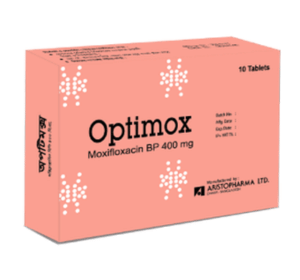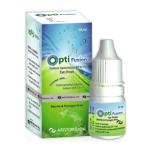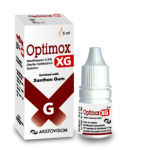Optimox (Moxifloxacin)

Therapeutic Group : Antibiotic
Presentation:
Optimox Tablet: Each film coated tablet contains Moxifloxacin Hydrochloride BP equivalent to Moxifloxacin 400 mg.
Pharmacology:
Moxifloxacin shows antibacterial activity by inhibiting the bacterial enzyme topoisomerase -II (DNA gyrase) and topoisomerase – IV.
Indications:
Optimox is indicated for treating the following infections caused by susceptible bacteria. 1. Community acquired pneumonia 2. Exacerbation of chronic bronchitis 3. Sinusitis 4. Skin and soft tissue infections 5. Pelvic inflammatory disease 6. Complicated intra-abdominal infections 7. Hospital-acquired pneumonia 8. Infective endocarditis etc.
Dosage & Administration:
The recommended dose of Optimox is 400 mg once daily. The duration of therapy depends on the type of infections. Community Acquired Pneumonia 400 mg once daily for 7-14 days, Exacerbation of chronic bronchitis 400 mg once daily for 5-10 days, Sinusitis 400 mg once daily for 7-10 days, Skin and soft tissue infections 400 mg once daily for 7-21 days, Pelvic inflammatory diseases 400 mg once daily for 14 days, Complicated intra-abdominal infections 400 mg once daily for 5-14 days, Hospital-acquired pneumonia 400 mg once daily for 7-8 days, Infective endocarditis 400 mg once daily for 28-42 days. No dosage adjustment is required in patients with renal or hepatic impairment.
Contrainidications:
Optimox is contraindicated in the patients with known hypersensitivity to Moxifloxacin or other quinolones.
Warning & Precautions:
Moxifloxacin has been shown to prolong the QT interval in some patients. It should be avoided in patients with known prolongation, hypokalemia and with drugs that prolong the QT interval. It may cause increased risk of tendinitis and tendon rupture. It should be discontinued if pain or inflammation in a tendon occurs.
Side effects:
Most side effects reported with Moxifloxacin treatment are mild to moderate in nature and require no treatment. Most common adverse reactions are nausea, diarrhea, headache and dizziness.
Drug interaction:
Antacids, sucralfate, multivitamins and other products containing multivalent cations reduces the absorption of Moxifloxacin. Moxifloxacin should be administered 4 hours before or 8 hours after antacids, sucralfate, multivitamins and other products with multivalent cations. It may enhance anticoagulant effect of warfarin and proarrythmic effect of Class IA and Class III antiarrhythmics. So concomitant use of Moxifloxacin with them should be avoided. No clinically significant drug interactions of theophylline, digoxin, or glyburide have been observed with Moxifloxacin.
Use in special groups:
Use in Pregnancy:
Moxifloxacin should be used during pregnancy only if the potential benefit justifies the potential risk to the fetus as there are no adequate and well-documented studies in pregnant women.
Use in Lactating Mother:
Moxifloxacin has not been measured in human milk, although it can be presumed to be excreted in human milk. Caution should be exercised when Moxifloxacin eye drops & eye ointment is administered to a lactating mother.
Pediatric Use: The safety and effectiveness of Moxifloxacin eye drops & eye ointment in infants below one year of age was not proven earlier. However, several latest clinical studies show that the drug can be used safely in children even younger than one month of age.
Geriatric Use:
No overall differences in safety and effectiveness have been observed between elderly and younger patients.
Packing:
Optimox Tablet (10’s): Each box contains 10 tablets in alu-alu blister pack.



